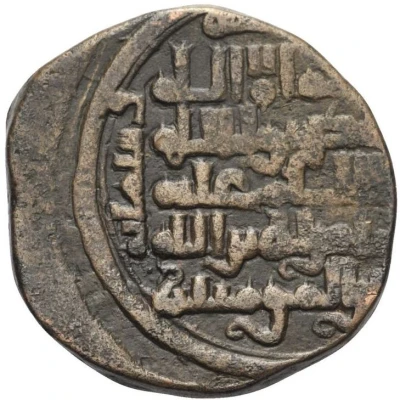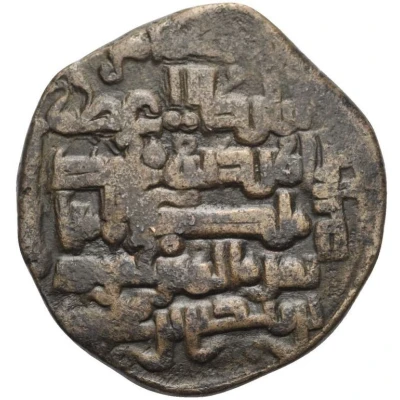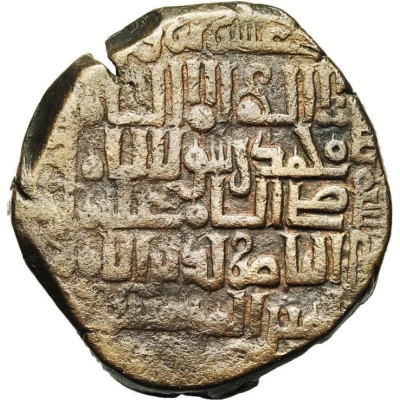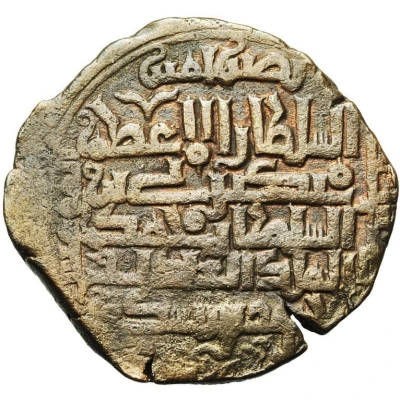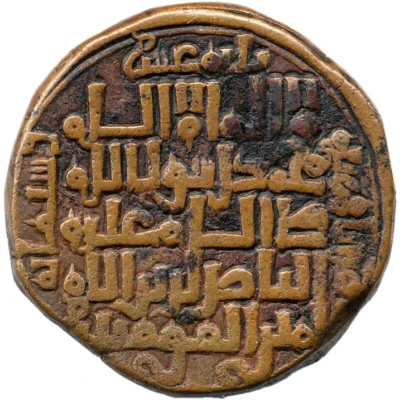
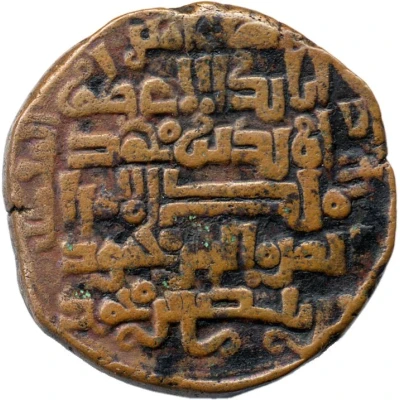

© American Numismatic Society (ANS)
Dirham - Mahmud ibn Pishkin citing Ildegizid Uzbek
| Copper | 17.2 g | 29.0 mm |
| Issuer | Pishkinid dynasty (Greater Iran) |
|---|---|
| King | Mahmud ibn Pishkin (circa 1212-1226) |
| Type | Standard circulation coin |
| Years | 612-613 (1212-1226) |
| Calendar | Islamic (Hijri) |
| Value | Dirham (0.7) |
| Currency | Dinar (1155-1231) |
| Composition | Copper |
| Weight | 17.2 g |
| Diameter | 29.0 mm |
| Thickness | 4 mm |
| Shape | Round (irregular) |
| Technique | Hammered |
| Orientation | Variable alignment ↺ |
| Demonetized | Yes |
| Updated | 2024-10-05 |
| Numista | N#276483 |
|---|---|
| Rarity index | 90% |
Reverse
Script: Arabic
Translation:
Field: Atābak al-aʿẓam / Uzbak ibn Muḥammad / malik al-umarāʾ / Nuṣrat al-dīn Maḥmūd / ibn Bishkīn ibn Muḥammad
Margin: yamīn amīr / al-muʾminīn
Field: The supreme Atabek, Uzbek ibn Muhammad. King of the rulers, Nusrat al-din Mahmud, son of Pishkin, son of Muhammad
Margin: the right hand of the Commander of the Believers
Edge
Plain.
Comment
"1916 AE Dirham, as malik al-umara and vassal of the Ildegizid Uzbek called atabek al-a‘zam
C [Common]
Known dated 612 & 613, though most specimens lack a clear date. His title nusrat al-din always appears on these coins."
Interesting fact
One interesting fact about this coin is that it was made of copper, which was a common material used for coins in the Pishkinid dynasty. The use of copper for coins was practical because it was abundant, durable, and had a low intrinsic value, making it ideal for circulating currency. Additionally, copper coins were easier to produce than coins made of precious metals like gold or silver, which made them more accessible to the general population. The fact that this coin was made of copper highlights the resourcefulness and practicality of the Pishkinid dynasty in their monetary system.
